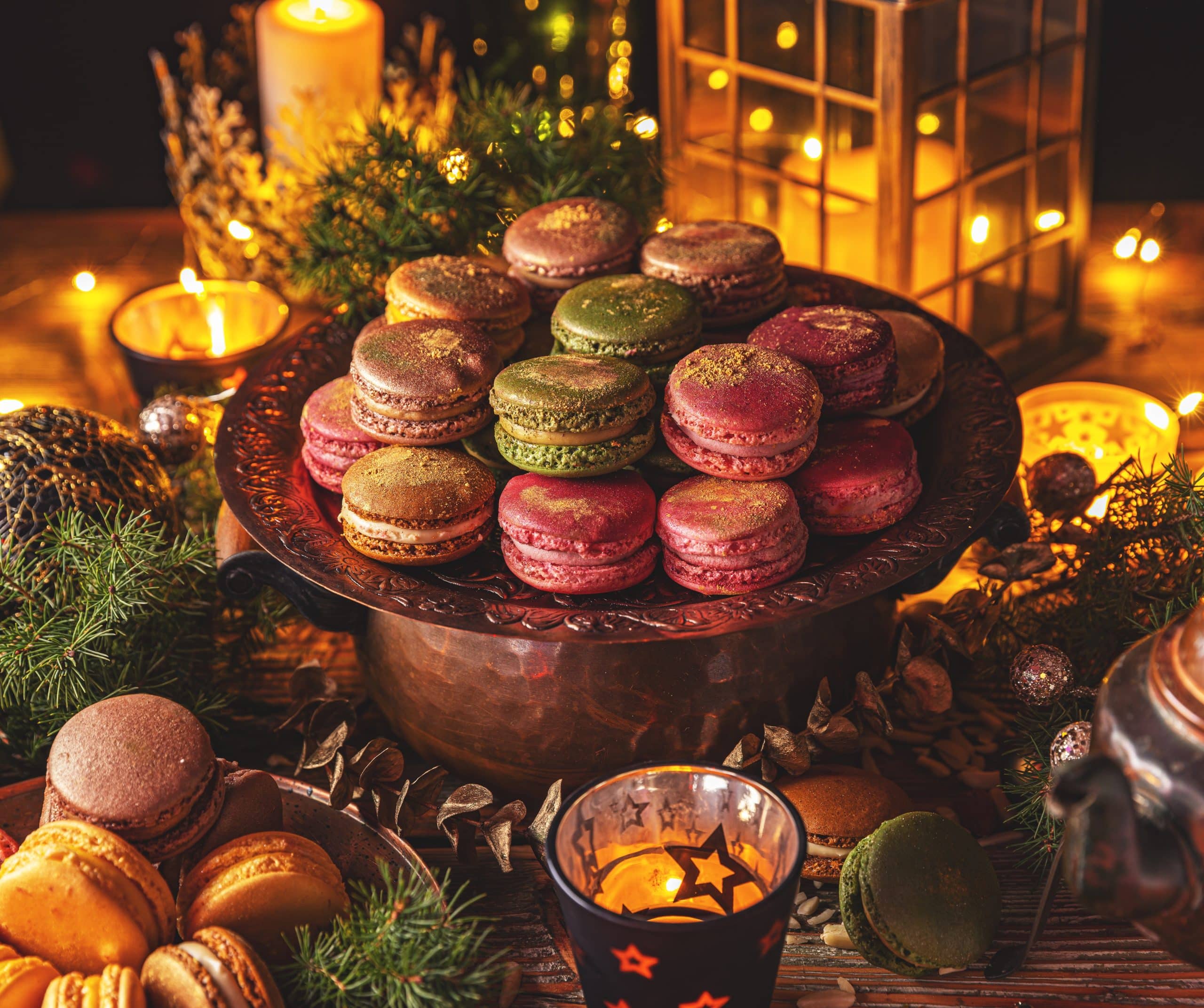Can You Master the Delicate Art of Creating Gourmet Soufflés at Home?

The Origin of Soufflés: A French Culinary Masterpiece
Before embarking on our culinary adventure, it’s worth delving into the rich history of soufflés. The term ‘soufflé’, which is unmistakably of French origin, literally translates to ‘blown up’ or ‘puffed up’. And that’s exactly what this delicate dish does in the oven. Soufflés first made their appearance in French cookbooks in the 18th century, and they’ve been a favorite in the culinary world ever since.
Each soufflé, whether sweet or savory, begins with two fundamental elements: a creamy base to give it flavor, and beaten egg whites to provide the signature rise. The base can be flavored with a variety of ingredients, from chocolate and cheese to fruits and spices. When the base and egg whites are gently combined and placed in the oven, the heat causes the air in the egg whites to expand, thus giving the soufflés their characteristic puff.
A voir aussi : What Techniques Can Elevate a Simple Omelette to a Gourmet Breakfast?
Understanding the Basic Ingredients and their Role
The key to mastering the art of soufflé-making lies in understanding its base ingredients. Primarily, a soufflé consists of a flavorful base and egg whites. But let’s break it down further.
Firstly, you have the egg whites. When whipped, egg whites create tiny air pockets. These pockets expand in the oven’s heat, causing your soufflé to rise. The key here is to ensure you whip your egg whites to the perfect consistency – not too soft, not too firm.
A lire en complément : What’s the Key to a Perfectly Balanced and Flavorful Greek Moussaka?
Next up is your base. Typically, your base will be a flavored béchamel sauce or a pastry cream for sweet soufflés. The base is what gives your soufflé its flavor. It can be as simple as melted chocolate or as complex as a delicately seasoned cheese sauce.
Then, there’s a small but essential ingredient – sugar. If you’re preparing a sweet soufflé, sugar not only sweetens the dish but also helps the egg whites to hold their shape. It’s crucial not to overdo it with the sugar, though. Too much can cause the egg whites to become too stiff.
Last but not least, we have butter and flour. These two ingredients are used to prepare the soufflé dish before pouring in your mixture. Butter helps to prevent the soufflé from sticking to the dish, while flour provides a surface for the soufflé to cling to as it rises.
The Soufflé Making Process: A Recipe to Follow
Now that you understand the role of each ingredient, it’s time to get down to the nitty-gritty – the recipe itself. For beginners, a classic cheese soufflé is a great place to start.
To make a cheese soufflé, you’ll need:
- 4 egg whites
- 2 yolks
- 1 cup of milk
- 1 cup of grated cheese
- 2 tablespoons of butter
- 2 tablespoons of flour
- Salt and pepper to taste
Begin by preparing your soufflé dish. Generously butter the inside of the dish and dust it with flour, shaking out any excess. This process will aid the soufflé in climbing the sides of the dish as it bakes.
Next, it’s time to make your base. Melt butter in a saucepan, add flour and stir until it forms a paste. Gradually add the milk while continuously stirring to avoid lumps. Cook this mixture on medium heat until it thickens. Once the sauce is thick, add cheese, salt, and pepper. Stir until the cheese melts and sets aside to cool slightly.
Meanwhile, separate your eggs. Remember, your egg whites are the stars of the show in a soufflé, so handle them with care. Place the egg whites in a clean, dry bowl and beat them until they form soft peaks – this is the ideal consistency for a soufflé.
Once your cheese sauce has cooled a bit, stir in the egg yolks. Then, gently fold in the beaten egg whites. The key word here is ‘gently’. You want to preserve as much of that air in the egg whites as possible.
Pour your soufflé mixture into the prepared dish and bake in a preheated oven at 375°F (190°C) for about 25 minutes.
Tips and Tricks to Perfect Your Soufflés
Creating perfect soufflés may seem daunting, especially if this is your first time. But with a little practice and these handy tips and tricks, you’ll soon master this culinary challenge.
When separating your eggs, make sure no yolk gets into the whites. Even a little bit of yolk can prevent the whites from achieving their maximum volume.
When it comes to beating your egg whites, you need to strike a balance. Underbeaten whites won’t have enough structure to help the soufflé rise, while overbeaten whites will be too stiff to expand in the oven.
Temperature plays a vital role in the success of your soufflé. Always preheat your oven and avoid opening the door while your soufflé is baking. The sudden change in temperature can cause your soufflé to collapse.
Lastly, remember this golden rule of soufflé baking: patience is key. Your soufflé needs to be served immediately after it comes out of the oven. But don’t fret if it starts to deflate once it’s out of the oven – that’s completely normal. After all, the joy of eating a soufflé is in its ephemeral beauty!
The Joy of Cooking Soufflés with Children
Creating soufflés can be a fun and educational cooking activity to do with your child. It’s a great way to teach them about the science behind cooking – how the egg whites help the soufflé to rise, the role of heat in cooking, and so on. Plus, the look on their faces when they see the soufflé puff up in the oven will be priceless!
Start with a simple recipe like a chocolate soufflé. The process is similar to the cheese soufflé recipe mentioned earlier, except you’ll be using chocolate instead of cheese for the base. It’s also a sweet treat that your kids will love to eat!
Remember to supervise them closely during the process, especially when it comes to handling the oven. And most importantly, have fun! Cooking is not just about the end result, but also the joy of creating something from scratch. And who knows, your child might just grow up to be the next great soufflé master!
The Role of Quality Ingredients in a Successful Soufflé
To truly master the art of French cooking, one must understand the significance of using high-quality ingredients. Similar to many French dishes, the soufflé is relatively simple in terms of its components. However, the secret to its delectable taste lies in the quality of ingredients used.
The choice of eggs, for instance, can significantly impact your soufflé. Fresh, free-range eggs are always a better choice over their grocery-store counterparts. The freshness of the egg is essential because it directly influences the volume and stability of the whipped egg whites, which are the backbone of your soufflé.
The cheese used in your cheese soufflé or the dark chocolate in your chocolate soufflé should also be of high quality. Remember, the base of your soufflé, whether cheese or chocolate, is what imparts flavor to the dish. Therefore, using a rich, flavorful cheese or a fine-quality dark chocolate can elevate your soufflé to a gourmet level.
Even the sugar, butter, and flour – the seemingly less significant ingredients – should be of good quality. After all, these are the foundational building blocks of your soufflé, and can make a significant difference in the final result.
In essence, each ingredient used in a soufflé has a critical role to play. Therefore, investing in high-quality ingredients is a small price to pay for the ultimate joy of relishing a perfectly risen, delicately flavored soufflé at home.
Mastering Art of Soufflés: A Homage to Julia Child
Julia Child, the acclaimed American chef, is often fondly remembered for her love for French cuisine. One of the many French dishes she brought into American households was the soufflé. Child’s passion for cooking techniques, and her ability to simplify them for her audience, made complex dishes like the soufflé seem achievable for home cooks.
According to Julia Child, the key to mastering a soufflé is patience and precision. Every step, from separating the egg yolks and whites to achieving the ‘stiff peaks’ consistency when beating the egg whites, requires care and attention. Little details, like making sure the whisk attachment and bowl are clean and dry before you start whipping the egg whites, also matter.
Furthermore, Child advocated for the use of a whisk rather than an electric mixer to beat the egg whites. This might seem like an arduous task, but it gives you more control over the consistency. Plus, it’s a good arm workout!
Lastly, Julia Child emphasized the importance of serving the soufflé immediately. ‘A soufflé waits for no one’, she famously said. As soon as it’s out of the oven, it starts to deflate, which is completely normal but serves as a stark reminder of the ephemeral beauty of this classic French dish.
Conclusion
Mastering the art of creating gourmet soufflés at home is a journey worth undertaking. It’s not just about the end result – although a perfectly risen, golden-brown soufflé is a sight to behold – it’s also about the process. It’s about understanding the role and importance of each ingredient, employing precise cooking techniques, and ultimately, learning to appreciate the ephemeral beauty of this delicate French dish.
So, whether you’re a seasoned home cook or a beginner, don’t shy away from the challenge of making a soufflé. Remember, as Julia Child said, ‘The only real stumbling block is fear of failure. In cooking, you’ve got to have a what-the-hell attitude.’ So, embrace the journey, learn from your mistakes, and soon enough, you’ll be whipping up delicious soufflés with the ease and confidence of a true master chef!
